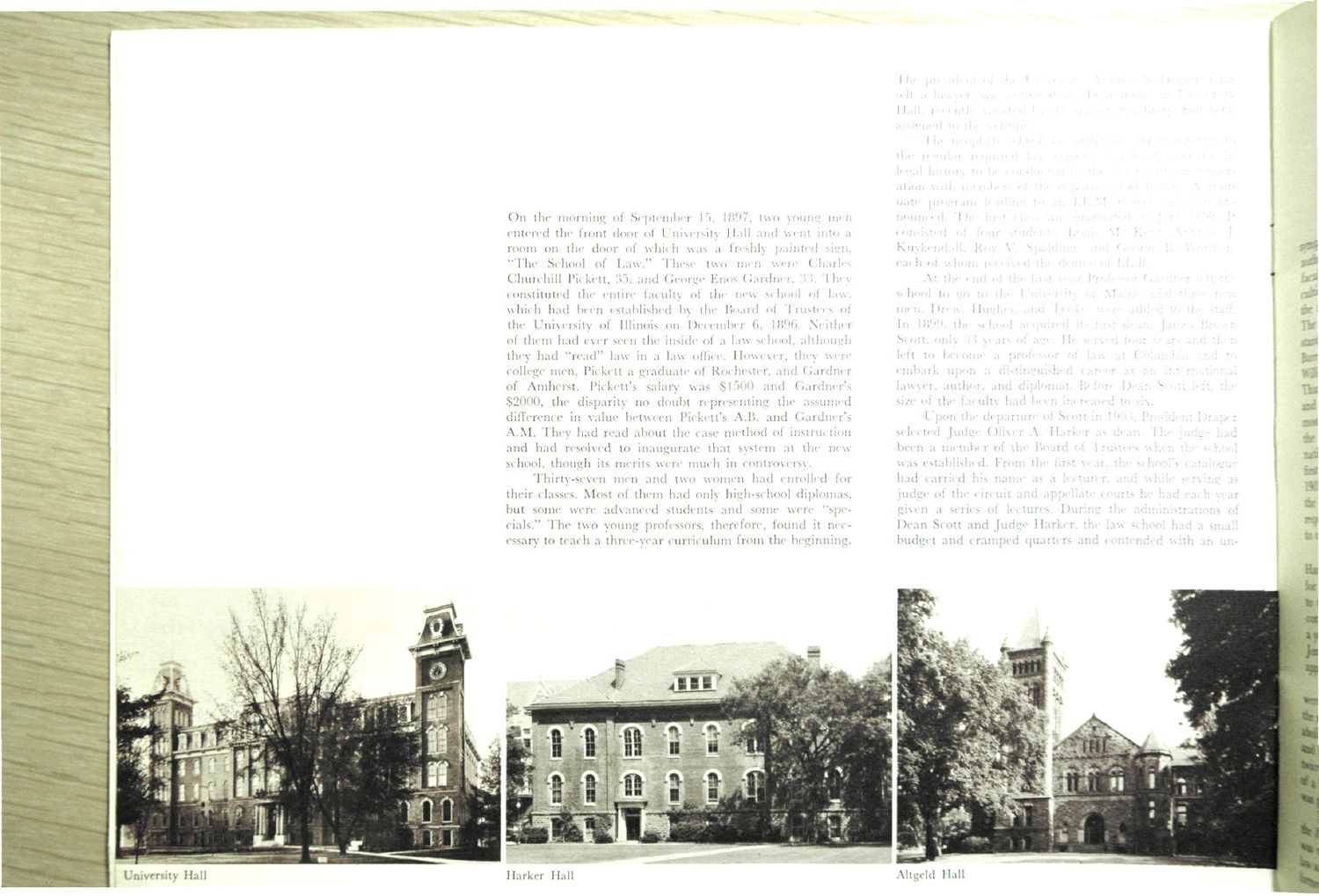| |
| |
Caption: Dedication - College of Education Dedication
This is a reduced-resolution page image for fast online browsing.

EXTRACTED TEXT FROM PAGE:
On the morning of September 15, 1897, two young men entered the front door of University Hall and went into a room on the door of which was a freshly painted sign, "The School of Law." These two men were Charles Churchill Pickett, 35, and George Enos Gardner, 33. They constituted the entire faculty of the new school of law, which had been established by the Board of Trustees of the University of Illinois on December 6, 1896. Neither of them had ever seen the inside of a law school, although they had "read" law in a law office. However, they were college men, Pickett a graduate of Rochester, and Gardner of Amherst. Pickett's salary was $1500 and Gardner's $2000, the disparity no doubt representing the assumed difference in value between Pickett's A.B. and Gardner's A.M. They had read about the case method of instruction and had resolved to inaugurate that system at the new school, though its merits were much in controversy. Thirty-seven men and two women had enrolled for their classes. Most of them had only high-school diplomas, but some were advanced students and some were "specials." The two young professors, therefore, found it necessary to teach a three-year curriculum from the beginning. The president of the University, Andrew S. Draper, himself a lawyer, was acting dean. Four rooms in University Hall, recently vacated by the university library, had been assigned to the venture. The neophyte school was ambitious, for in addition to the regular required law courses, it offered a course in legal history to be conducted by the law faculty in cooperation with members of the department of history. A graduate program leading to an LL.M. degree was also announced. The first class was graduated in June 1898. It consisted of four students, Louis M. Kent, Andrew J. Kuykendall, Roy V. Spalding, and George B. Worthen, each of whom received the degree of LL.B. At the end of the first year Professor Gardner left the school to go to the University of Maine, and three new men, Drew, Hughes, and Tooke, were added to the staff. In 1899, the school acquired its first dean, James Brown Scott, only 33 years of age. He served four years and then left to become a professor of law at Columbia and to embark upon a distinguished career as an international lawyer, author, and diplomat. Before Dean Scott left, the size of the faculty had been increased to six. Upon the departure of Scott in 1903, President Draper selected Judge Oliver A. Harker as dean. The judge had been a member of the Board of Trustees when the school was established. From the first year, the school's catalogue had carried his name as a lecturer, and while serving as judge of the circuit and appellate courts he had each year given a series of lectures. During the administrations of Dean Scott and Judge Harker, the law school had a small budget and cramped quarters and contended with an un- Harker Hall Altgeld Hall
| |